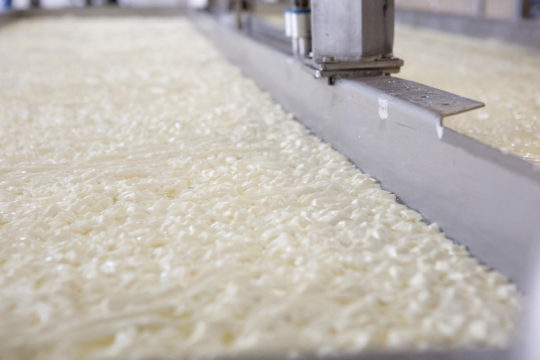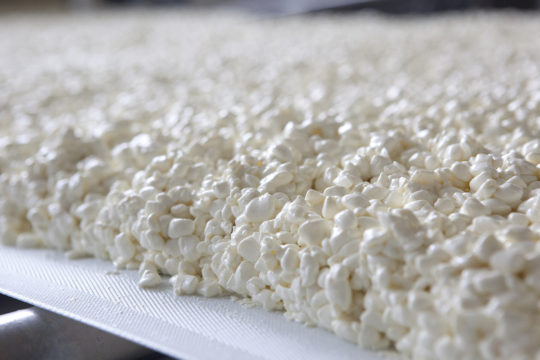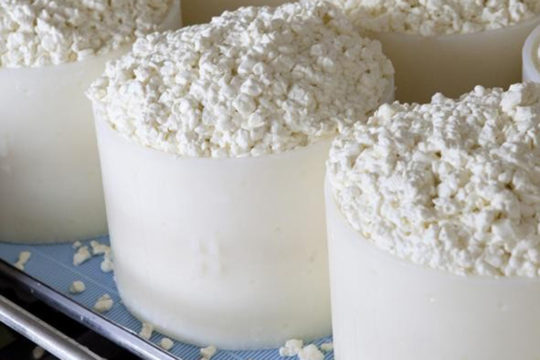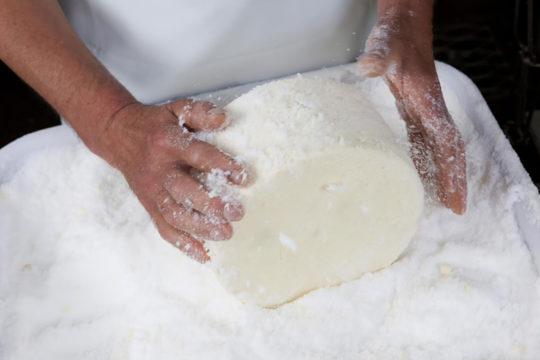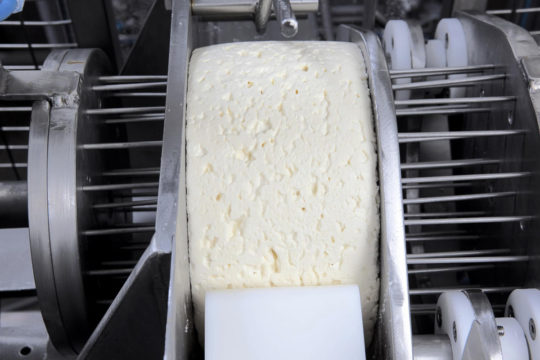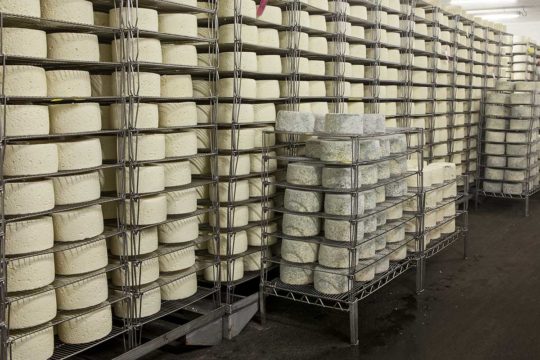Stages of production
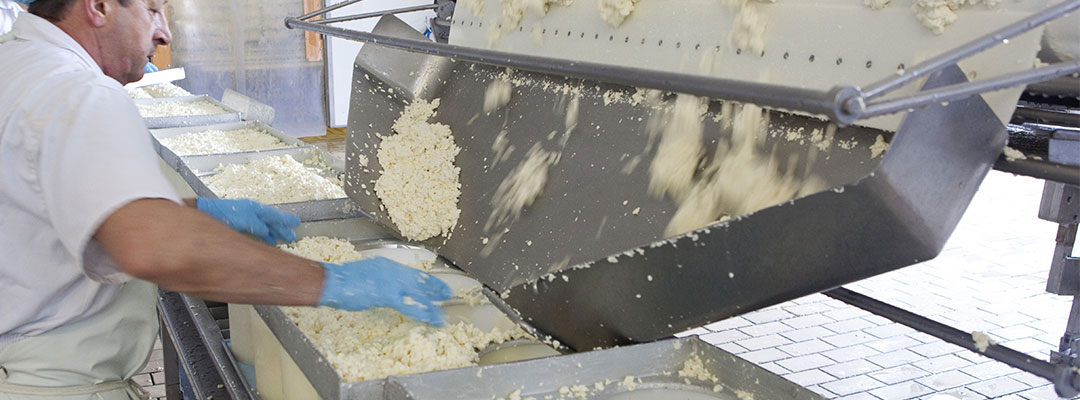
Bleu d’Auvergne can be made either on the farm (using milk from only one herd) or at the dairy (with a blend of milks from local farms). In the latter case, special lorries bring the milk to the dairy: in fact, “PDO milk” used for making Bleu d’Auvergne mustn’t be mixed with “regular” milk.
- 20 to 25 litres of milk are needed to make 1 cheese.
- At the dairy, lactic ferments are added to the milk in a vat: the famous Penicillium Roqueforti is what makes it possible for the “blue” to develop. The milk is kept at a temperature of 30-34°C then left to curdle by adding pressure.
- Once the milk has curdled, that is, once it has solidified through coagulation, the curd is cut up into small pieces about the size of a grain of corn. These grains of curd are then carefully stirred in a vat: they become covered in a fine film so that they do not stick to one another. This process is known as “coiffage” in French.
- This “coiffage” is essential to making Bleu d’Auvergne. Preventing the grains of curd from sticking to one another means that the Bleu, that is, the Penicillium Roqueforti, can grow in the cavities. The vat’s contents are drained onto a draining mat and the whey (lactoserum) separates from the solid parts.
- The drained curd is placed into 20 cm in diameter cylindrical moulds that are pierced with holes so that the curd can continue to drain.
- After around 48 hours, the cheese is removed from the mould for hand salting: first around the sides and on one surface, then again around the sides and the other surface.
Salt plays a crucial role in making Bleu d’Auvergne: on the one hand, it means drainage can happen over time. It also protects the cheese from undesirable micro-organisms. Finally, it plays a major role in the Bleu d’Auvergne flavour.
At present, there is no machine that is able to reproduce the specific action that cheese makers perform when they salt Bleu d’Auvergne!
- Piercing is without doubt the most distinctive phase of making this PDO. In fact, in order to grow, the blue mould (Penicillium Roqueforti) needs oxygen. So Bleus d’Auvergne have always been literally pierced using large skewers a lot like knitting needles. This stage, which was previously carried out manually, is now performed by machine (using a piercer): the passages created in the cheese mean that air can circulate and Penicillium Roqueforti can grow.







